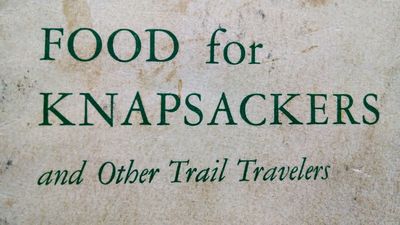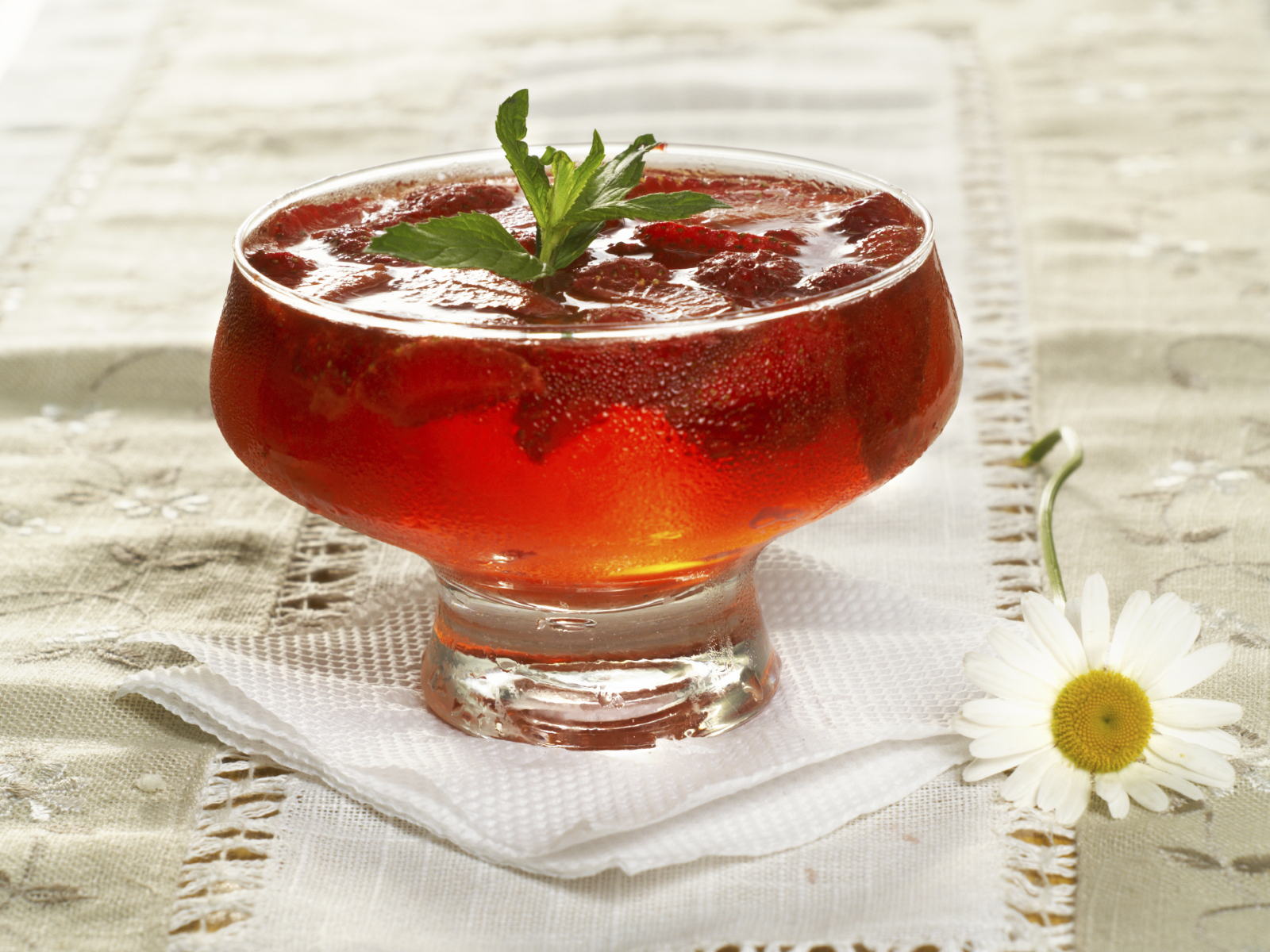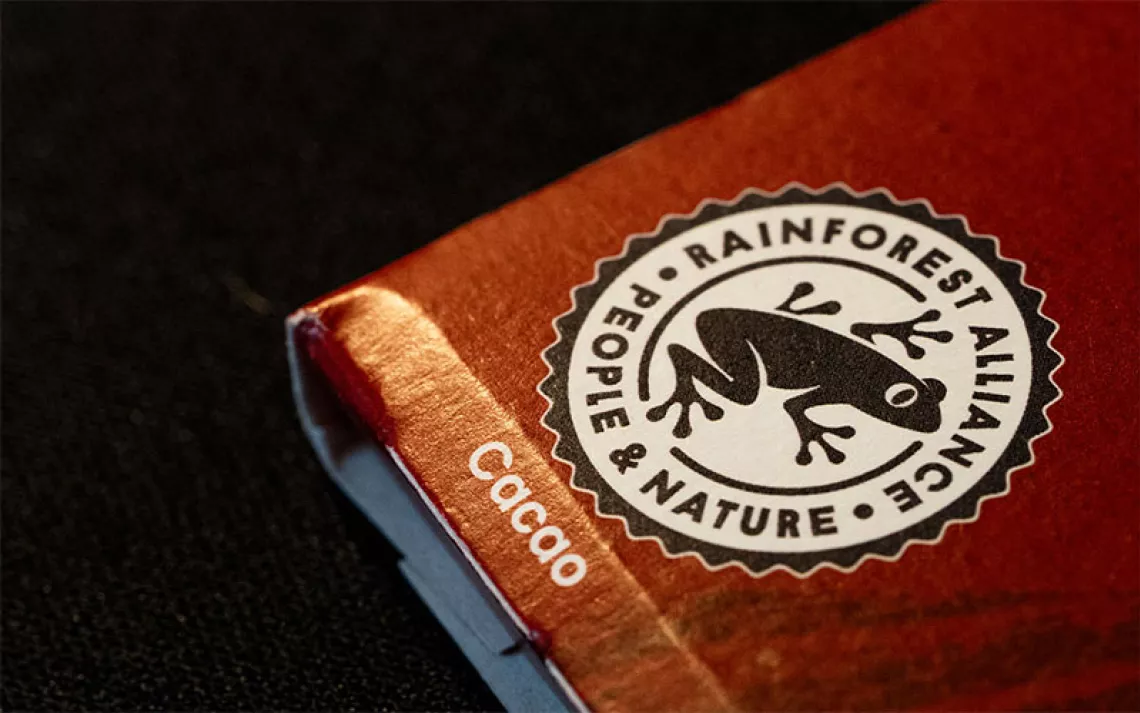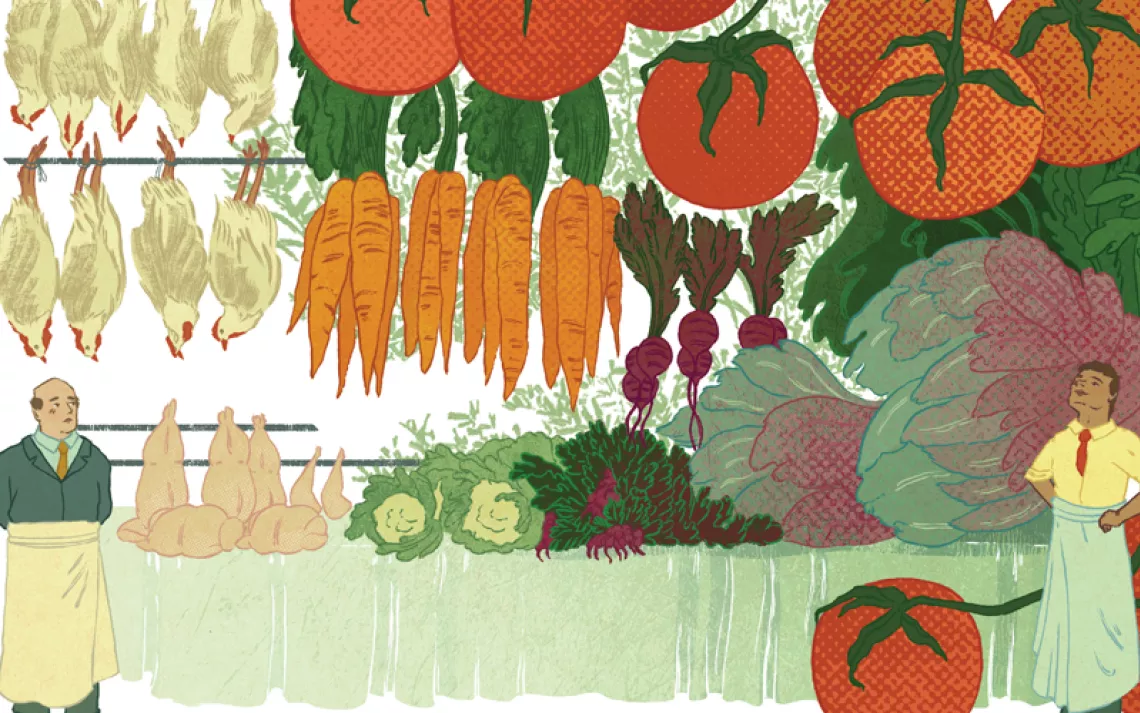Sierra Savories: Trout, Jello, and Dressing in Drag
On today's trails we gulp down GORP and munch on Clif bars. But what if you want to go on a Sierra Club expedition in the 1929. What would you eat in the back country? How about in 1954? 1976? The ever-evolving food of the Sierra Club reflects not only its history, but our own attitudes toward food, nature, and what we put in our bodies.
The meals and snacks near the beginning of the Sierra Club’s history were simple, fresh, healthy and often caught and cooked on site by club members. According to one Bulletin writer in 1916, “Lunch Parties cooked trout in the ashes or on a hot rock.” But don’t let the simplicity of the cuisine fool you—these early Clubbers really knew how to have fun. On the last night of this 1916 Kern River trip, the guys pulled out all the stops: “The last evening we dined sumptuously and well, served by familiar faces rising above unfamiliar garments…” The men had raided the women’s dunnage bags and were serving the group while wearing skirts and floral dressing gowns. Talk about dining in style.

In the Bulletins of the twenties and thirties, food tends to be included less and less in the trip records. Very few mentions of food occur, and if they do, it’s in the form of prim comments such as, “The best part of lunch was a brimming bowl of fragrant tea”. The dearth of gastronomic reviews may be the result of the difficult financial times. In these bulletins there are also reports of ‘hobo camps’ along the Sacramento River and references to other scars of the Depression, which most likely changed many peoples' attitudes toward indulgences.
In the years surrounding World War II, many Sierra Club members served or worked abroad. One serviceman was particularly delighted by a discovery he made in England in 1943: “Have you ever indulged in ‘fish and chips’? The ‘chips’ are nothing but french fries. The fish is cooked in deep fat and comes out with a sort of browned shell around it. The whole business tastes very good”. Another Club member traveling in Mexico was less pleased with his excursion meal. Visiting the village of San Juan Parangaricutiro in 1944, he encountered “eggs, chicken, enchiladas, tortillas, etc., sprinkled liberally with sand”. Not as tasty, apparently.
The 1950's saw the rise of pre-packaged foods that bore an striking resemblance to military rations and probably had nothing close to natural in them. We're talking a preponderance of Velveeta and powdered juice, along with an alarming number of things stuck inside jello.

The menu items for trips in the 60's continued to trend toward the ultra-preserved: freeze dried meat, stewed fruit, powdered vegetables— apparently something existed called 'cabbage flakes' that could be mixed with water and margarine to yield something vaguely edible. Slightly more exotic dishes started to appear on the menu as well, including tamale pie, Spanish rice, and the mysteriously titled ‘Joe’s Special’, which involved freeze-dried ground beef, powdered egg, and optional cheese. Deeelicious.

By the swingin’ 70’s dishes had gotten fancy: potential meals in 1972’s Cooking for Camp and Trail included papaya, avocado, and grapefruit salad, tripe and dumplings, curried fish steaks, and ham and oyster pie. Because of the increased amenities and ability to keep food fresh for longer, there were many more options, and by the 1976 edition of Simple Foods for the Pack: we're back to the 'healthy for you, healthy for the earth' food phase.
The cuisine gets increasingly health conscious up to present day, with trail recipe books starting to include allergy information and encouraging the reader to pack organic snacks with as little wasteful wrapping as possible. Fresh fish is back on the menu, though this time with guidelines about where, when, and how much you are allowed to catch. 2004's Simple Foods for the Pack acknowledges how the world and the way we treat food has evolved from the early days of the Sierra Club, but acknoweldge that " what hasn't changed is the need for quietude in places of beauty...and the need to nourish our bodies while we're out there." It's been a whirlwind ride, but we've come full circle.
 The Magazine of The Sierra Club
The Magazine of The Sierra Club







